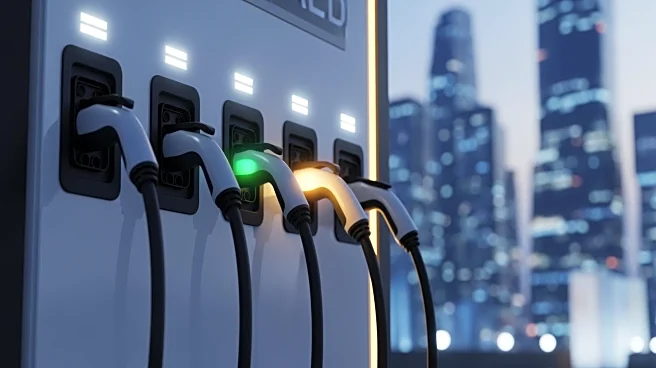What's Happening?
Tesla has announced a recall affecting nearly 13,000 electric vehicles in the United States, specifically targeting 5,038 Model 3 vehicles from the 2025 model year and 7,925 Model Y vehicles from the 2026
model year. The recall is due to a defect in the battery pack contactors, which are made with InTiCa solenoid. This defect can cause the contactors to open unexpectedly due to poor coil termination connections, potentially leading to a sudden loss of propulsion. Tesla has stated that no accidents have been reported as a result of this issue. The company plans to replace the affected contactors free of charge with certified units that do not contain the faulty solenoid. The issue was identified through service records, and an internal investigation began in early August.
Why It's Important?
This recall is significant as it highlights ongoing challenges in the production and quality assurance processes of electric vehicle manufacturers. For Tesla, a leader in the EV market, maintaining consumer trust is crucial, especially as the company continues to expand its market share. The recall could impact Tesla's reputation for reliability and safety, which are critical factors for consumers considering electric vehicles. Additionally, the recall underscores the importance of robust supply chain management, as the faulty components were sourced from international suppliers. This incident may prompt Tesla and other automakers to re-evaluate their supplier relationships and quality control measures to prevent similar issues in the future.
What's Next?
Tesla will proceed with replacing the defective contactors at no cost to the vehicle owners. The company will likely communicate with affected customers to ensure the recall process is smooth and efficient. Regulatory bodies such as the National Highway Traffic Safety Administration (NHTSA) will continue to monitor the situation to ensure compliance and safety standards are met. This recall may also lead to increased scrutiny of Tesla's manufacturing processes and could influence future regulatory policies regarding electric vehicle safety standards.














